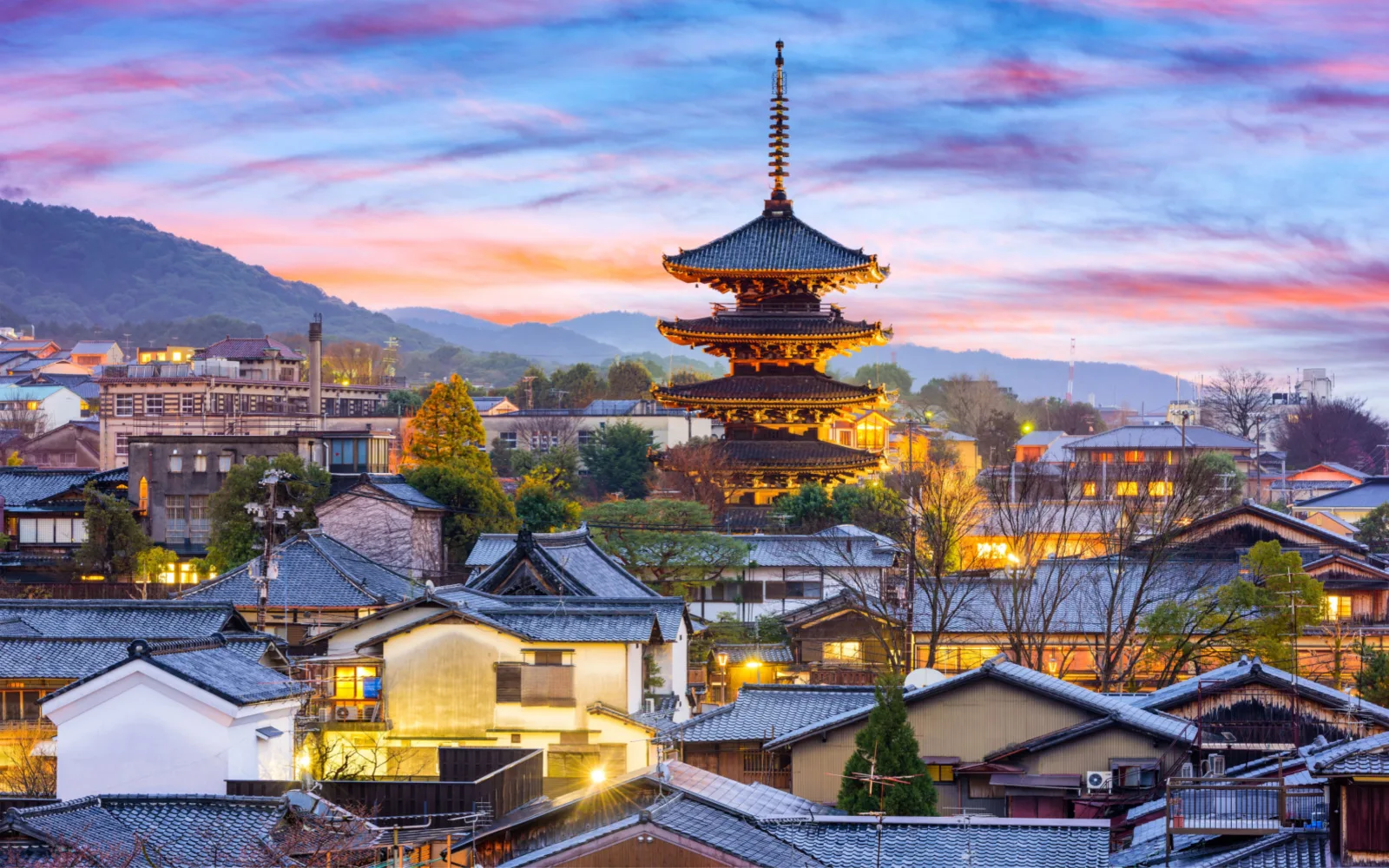What's the best time to visit Kyoto?
The best times to visit Kyoto are spring and fall, when the weather is mild, and the city’s landscapes transform into breathtaking scenes perfect for exploration and photography. Spring brings the famous cherry blossoms in March and April, attracting visitors worldwide, while fall offers a tapestry of vibrant foliage around mid-October.
These periods not only provide the best climate for walking tours but also coincide with traditional festivals like the Aoi Matsuri and Jidai Matsuri, offering a deep dive into Japan’s rich cultural traditions.
Kyoto in Japan is one of the country’s most popular destinations, for good reason. The beautiful city is one of the best-preserved remnants of imperial Japan. Kyoto was once the capital of Japan and retains much of its earlier majesty.
Many visitors flock to this city due to its over 1,000 historic Buddhist temples and Shinto shrines, such as the famous Fushimi Inari Shrine. Once home to Japan’s nobles and samurai, you can still visit the palaces and Zen gardens these powerful people built for themselves.
To make the most of Kyoto, head there when the city is at its best. We’ll show you this and more below — let us be your guide!
The Overall Best Time to Visit Kyoto
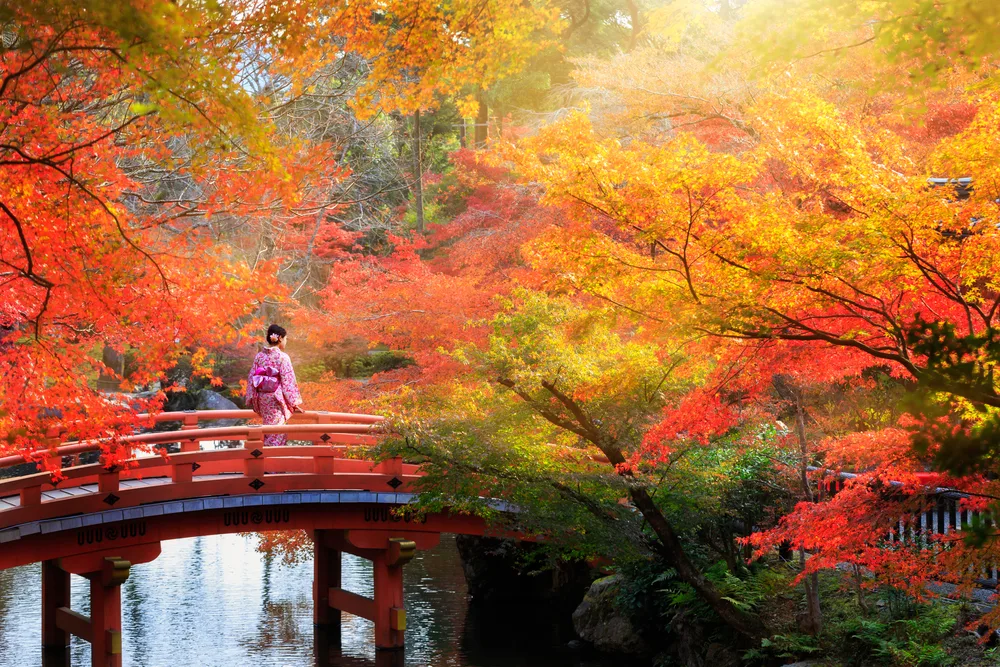
Patrick Foto/Shutterstock
The best time to visit Kyoto is in the spring or fall when nature turns Kyoto into a storybook-like city perfect for taking photos. One concern you should have is the weather since you will be walking around the city a lot when you visit Kyoto.
The city has a humid but temperate climate, which means that it has marked differences between the different seasons. Temperatures in the spring and fall are at their mildest, between 60–75 degrees Fahrenheit (15–25 degrees Celsius).
Although there is some chance of rain during these in-between seasons, you’ll likely only encounter mild showers that won’t affect your trip. The changing seasons bring beautiful changes in scenery to Kyoto. The spring is one of the best times to visit the city because it is cherry blossom season.
These iconic blooms attract thousands of tourists to the city each year because there is no better sight than countless pink flowers draped against the temples and palaces.
Cherry blossom season is in March and April, but the flowers are notoriously fickle. They change when they bloom each year and only last for a few weeks. The Kyoto official tourism site has a predicted cherry blossom calendar that can help you plan your trip.
Even if you do miss cherry blossom season, you can catch other blooms, such as the wisteria blossoms. Fall paints Kyoto in different colors thanks to the fall foliage.
The official tourism board site also has a fall foliage calendar that can help you predict when the leaves will be at their peak, usually by mid-October.
The colorful leaves and historic buildings are a photographer’s dream. Fall also attracts a lot of visitors, but not as many as spring, making it one of the best times to visit to capture good photos.
Spring is also a good season to visit for festivals celebrating traditional Japanese culture (although these festivals tend to peak in summer). During the spring, the five geisha districts hold official dances where visitors can see a geisha performance without paying for a private appointment.
During the Higashiyama festival, lasting through March and April, the historic district and temples are beautifully illuminated.
Other can’t-miss events in the spring and fall include:
- Yabusame Shinji, a mounted archery festival in May
- Aoi Matsuri, a historic parade held in May, one of Kyoto’s “Big Three” festivals
- Harvest moon viewing, usually in September
- Jidai Matsuri, the third of Kyoto’s big festivals, another historic parade held on October 22nd
For the quintessential Kyoto experience, visiting in spring or fall is a must, and it absolutely is worth braving the crowds to see Kyoto in bloom.
Cheapest Time to Visit Kyoto
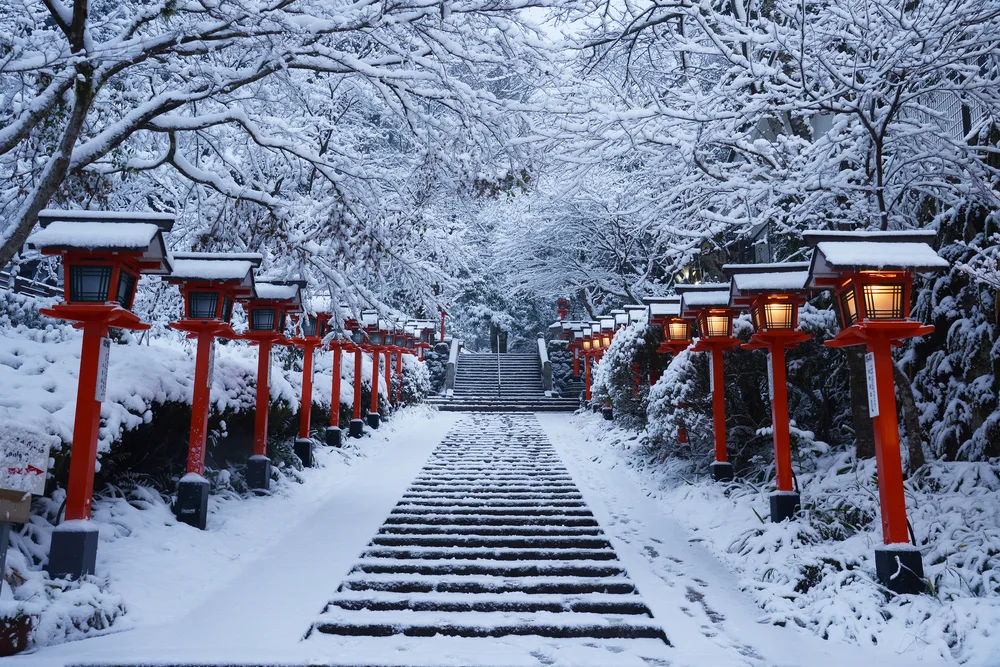
Saraporn/Shutterstock
The cheapest time to visit Kyoto is during the winter when the cold weather keeps many visitors away and you can save some money.
Kyoto’s winters can be very cold, with temperatures just above freezing, and this promise of chill puts off many visitors. That causes hotels to lower their prices since they don’t have enough visitors to fill their capacity.
As long as you bundle up properly, you can enjoy the charms of Kyoto, which is usually covered in snow during this season, and warm yourself with your saved money. During the winter, many hotels lower their rates since they can’t make as much money due to low demand.
You can save about 20% compared to peak season prices or even more—some high-end hotels even lower their prices by half. You can expect similar discounts on other activities, such as tea ceremonies, so take advantage of this low season.
If you are coming from outside Japan, you will probably need to fly to the country. In the middle of winter, in late January and February, you can usually find good deals on international flights to Japan.
You can also save money on flights in September when there is a slight dip in demand before the foliage hits its peak.
If you’re traveling in winter, just try to avoid the period around New Year’s. Flights tend to be more expensive during this time. Although you may find hotel deals, you’ll have fewer choices because some hotels close so staff can be with their families during the holiday.
Least Busy Time to Visit Kyoto
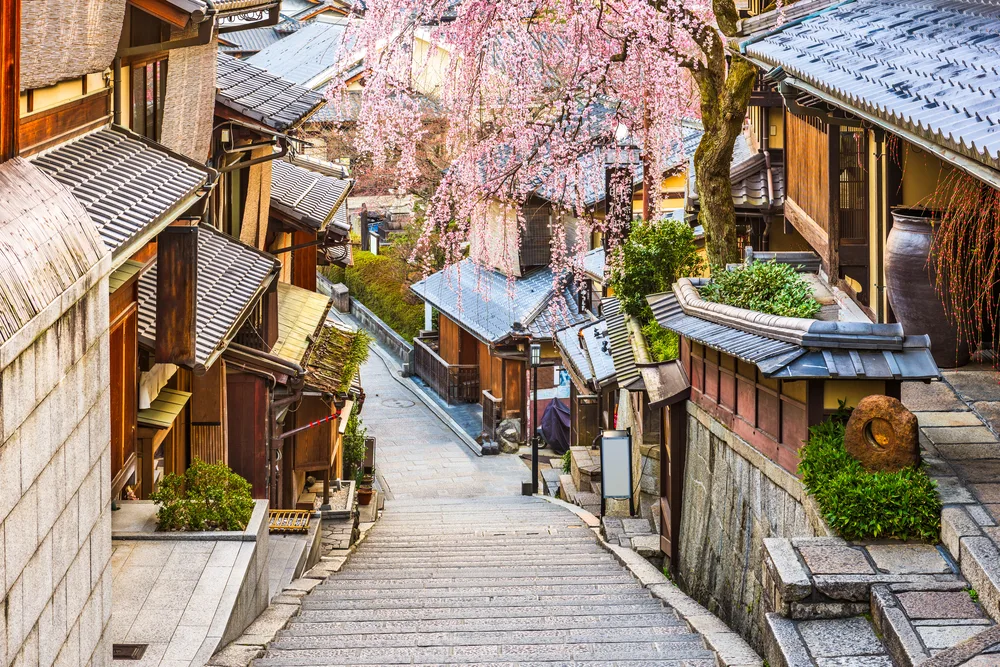
Sean Pavone/Shutterstock
The least busy time to visit Kyoto in absolute terms is in the winter, but you can also beat the crowds in the summer, which is the city’s tourism shoulder season.
Summers in Kyoto are hot and humid, with plenty of rain. Most tourists prefer to visit in the spring or fall when the weather is milder. Although there will still be people around, you won’t encounter the thick crowds you would normally find in the spring or fall.
That doesn’t mean that you won’t find plenty of other people on the street because June, July, and August are the peak of the festival season in Kyoto. This is the best time to visit to see the best of traditional Kyoto culture.
The main festival during this season (and the whole year) is Gion Matsuri, a several days-long festival dating back to Japan’s emperors. Enjoy street parades in traditional costumes on floats, followed by more laid-back street parties with beer and street food.
Throughout the rest of the summer, there are events highlighting exhibits at the local museums or local crafts such as pottery. In June, check out Takigi Noh, a festival of traditional Noh theater.
Worst Time to Visit Kyoto
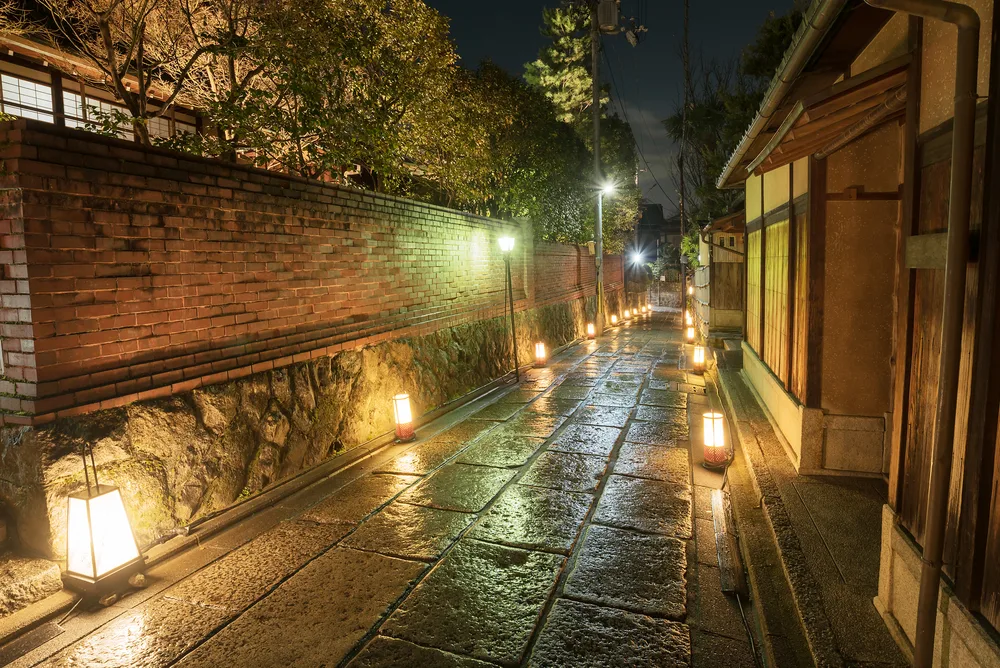
Nishitap/Shutterstock
There really is no bad time to visit Kyoto, but weather-wise, the worst time to visit is probably the summer. Summers in Kyoto can get very hot, with temperatures reaching the low 90s. Kyoto has a very humid climate, which makes the weather feel even hotter.
Plus, the city is affected by Japan’s monsoon season, which means that in June and especially July, you can expect torrential downpours or, at the very least, frequent rain.
This weather isn’t the most pleasant, but you can still enjoy Kyoto during it. The parks provide some much-needed shade and relief, and as long as you dress lightly and avoid the hottest part of the day, you should be fine.
Plus, you can always take a break in one of Kyoto’s many indoor attractions, such as museums. The worst (and best) times to visit really depend on your preferences. If you hate crowds, spring is the worst time to visit, while those who hate the cold should probably avoid Kyoto in winter.
Frequently Asked Questions
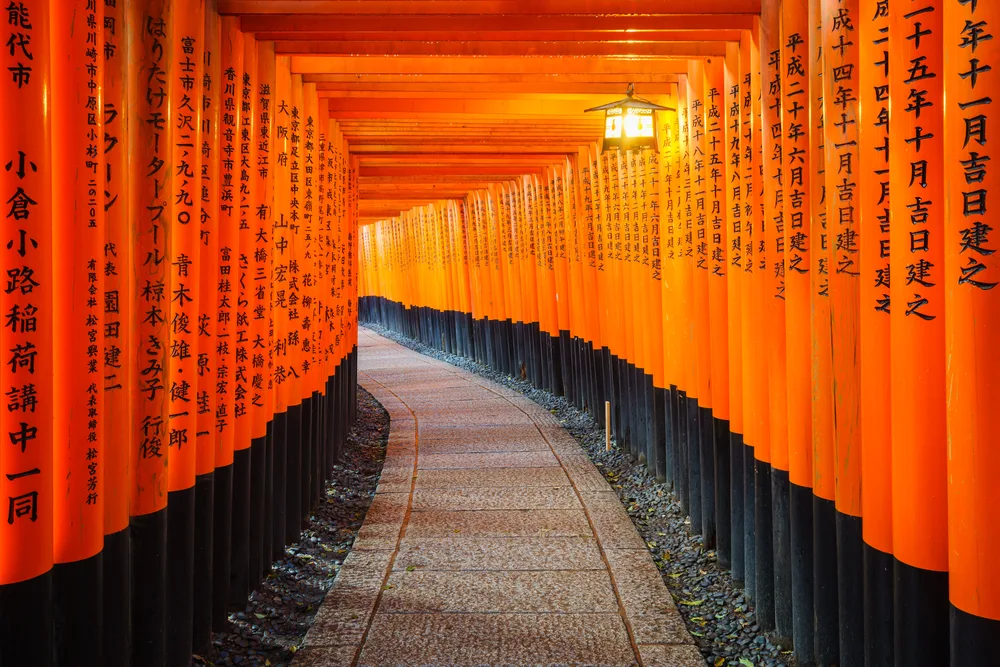
Lkunkl/Shutterstock
Here are some common questions people have asked to pick the best time to visit Kyoto:
What are the best dates to visit Kyoto?
The best dates to visit Kyoto are between mid-March and mid-April when the cherry blossom season peaks, but the exact dates vary each year.
Is Kyoto crowded in October?
Kyoto gets a fair number of crowds in October due to the fall foliage season, but you can beat the crowds by visiting at the very beginning of the month.
What is the coldest month in Kyoto?
The coldest month in Kyoto is January, when temperatures routinely hover just above freezing and snow is common.
Is Kyoto better than Osaka?
The answer depends on what you want to see. Kyoto is better for history, while Osaka is better for nightlife.
So, What’s the Best Time to Visit Kyoto?
Kyoto is at its most picturesque in the spring during cherry blossom season or in the fall during the autumn foliage season. For savings, visit in the winter, while the best festivals happen in the summer.



